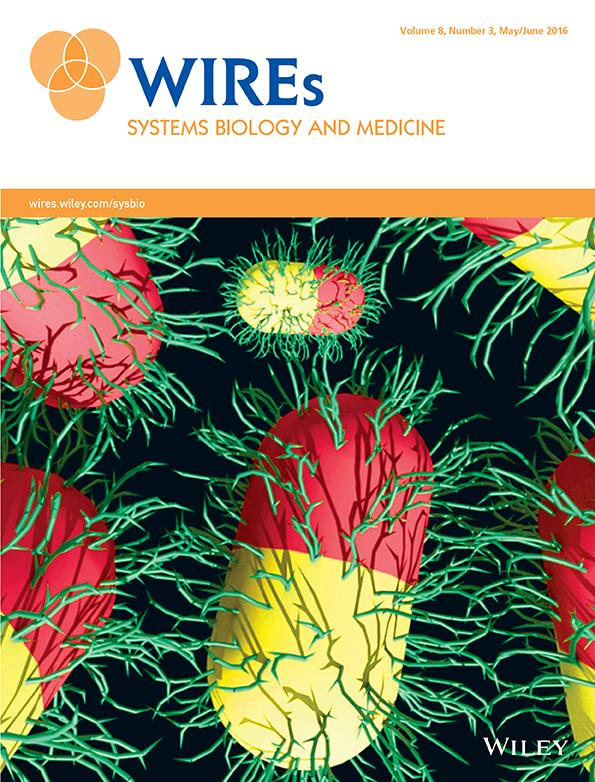Physiological, metabolic and biotechnological features of extremely thermophilic microorganisms
IF 7.9
Q1 Medicine
Wiley Interdisciplinary Reviews-Systems Biology and Medicine
Pub Date : 2017-02-16
DOI:10.1002/wsbm.1377
引用次数: 29
Abstract
The current upper thermal limit for life as we know it is approximately 120°C. Microorganisms that grow optimally at temperatures of 75°C and above are usually referred to as ‘extreme thermophiles’ and include both bacteria and archaea. For over a century, there has been great scientific curiosity in the basic tenets that support life in thermal biotopes on earth and potentially on other solar bodies. Extreme thermophiles can be aerobes, anaerobes, autotrophs, heterotrophs, or chemolithotrophs, and are found in diverse environments including shallow marine fissures, deep sea hydrothermal vents, terrestrial hot springs—basically, anywhere there is hot water. Initial efforts to study extreme thermophiles faced challenges with their isolation from difficult to access locales, problems with their cultivation in laboratories, and lack of molecular tools. Fortunately, because of their relatively small genomes, many extreme thermophiles were among the first organisms to be sequenced, thereby opening up the application of systems biology‐based methods to probe their unique physiological, metabolic and biotechnological features. The bacterial genera Caldicellulosiruptor, Thermotoga and Thermus, and the archaea belonging to the orders Thermococcales and Sulfolobales, are among the most studied extreme thermophiles to date. The recent emergence of genetic tools for many of these organisms provides the opportunity to move beyond basic discovery and manipulation to biotechnologically relevant applications of metabolic engineering. WIREs Syst Biol Med 2017, 9:e1377. doi: 10.1002/wsbm.1377极端嗜热微生物的生理、代谢和生物技术特征
据我们所知,目前生命的温度上限大约是120°C。在75°C及以上的温度下生长最佳的微生物通常被称为“极端嗜热菌”,包括细菌和古细菌。一个多世纪以来,人们一直对支持地球和其他太阳天体上热生物群落中生命的基本原理抱有极大的科学好奇心。极端嗜热菌可以是需氧菌、厌氧菌、自养菌、异养菌或化能养菌,它们存在于不同的环境中,包括浅海裂缝、深海热液喷口、陆地温泉——基本上,任何有热水的地方。研究极端嗜热菌的最初努力面临着挑战,包括它们与难以进入的地区隔离,在实验室培养存在问题,以及缺乏分子工具。幸运的是,由于它们相对较小的基因组,许多极端嗜热微生物是第一批被测序的生物,从而开辟了基于系统生物学的方法的应用,以探索它们独特的生理、代谢和生物技术特征。Caldicellulosiruptor细菌属,Thermotoga和Thermus细菌属,以及属于热球菌目和硫球菌目的古细菌,是迄今为止研究最多的极端嗜热菌。最近出现的许多这些生物的遗传工具提供了超越基本发现和操作的机会,以生物技术相关的代谢工程应用。中国生物医学工程学报,2017,39(9):1377。doi: 10.1002 / wsbm.1377
本文章由计算机程序翻译,如有差异,请以英文原文为准。
求助全文
约1分钟内获得全文
求助全文
来源期刊

Wiley Interdisciplinary Reviews-Systems Biology and Medicine
MEDICINE, RESEARCH & EXPERIMENTAL-
CiteScore
18.40
自引率
0.00%
发文量
0
审稿时长
>12 weeks
期刊介绍:
Journal Name:Wiley Interdisciplinary Reviews-Systems Biology and Medicine
Focus:
Strong interdisciplinary focus
Serves as an encyclopedic reference for systems biology research
Conceptual Framework:
Systems biology asserts the study of organisms as hierarchical systems or networks
Individual biological components interact in complex ways within these systems
Article Coverage:
Discusses biology, methods, and models
Spans systems from a few molecules to whole species
Topical Coverage:
Developmental Biology
Physiology
Biological Mechanisms
Models of Systems, Properties, and Processes
Laboratory Methods and Technologies
Translational, Genomic, and Systems Medicine
 求助内容:
求助内容: 应助结果提醒方式:
应助结果提醒方式:


